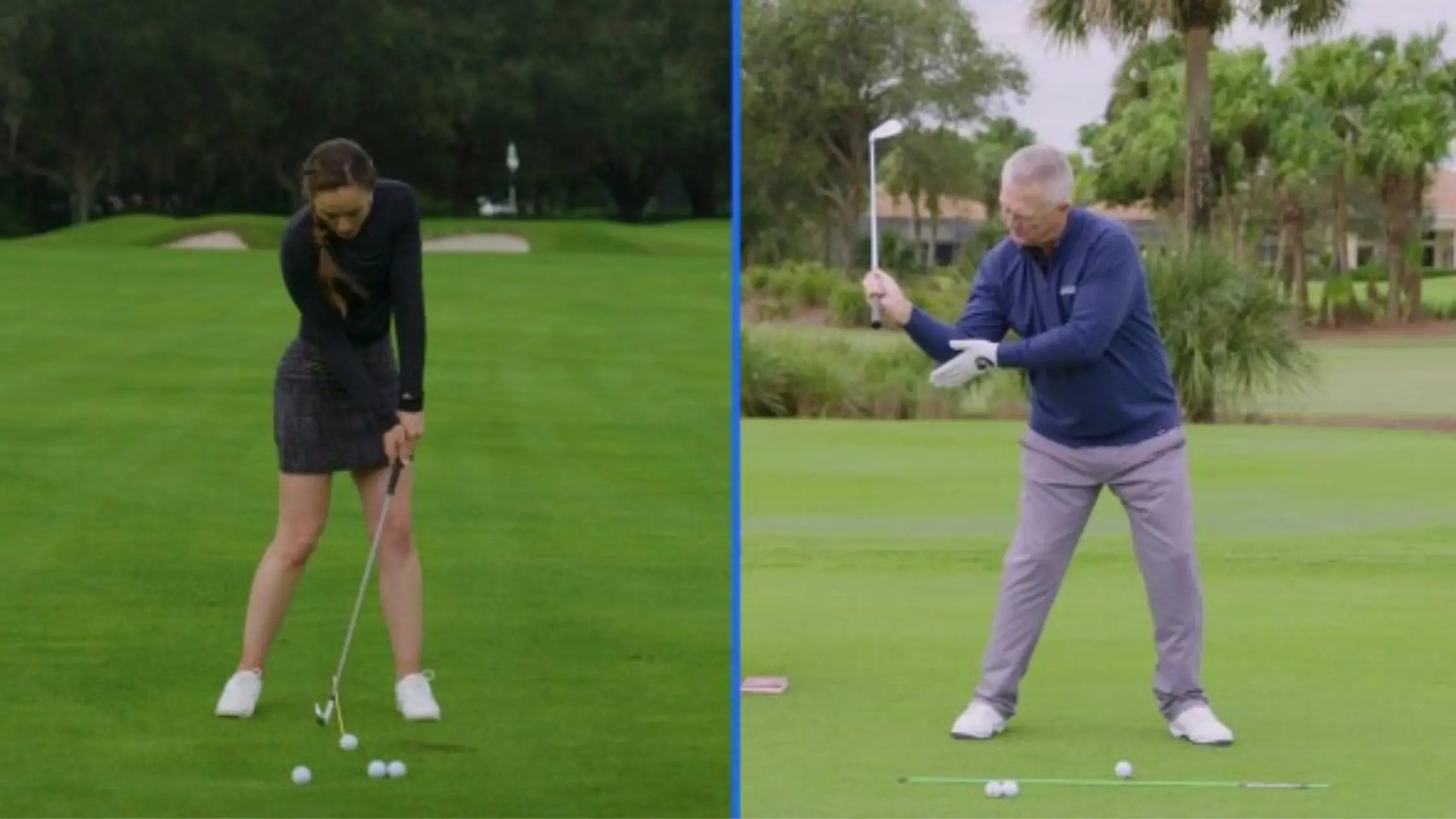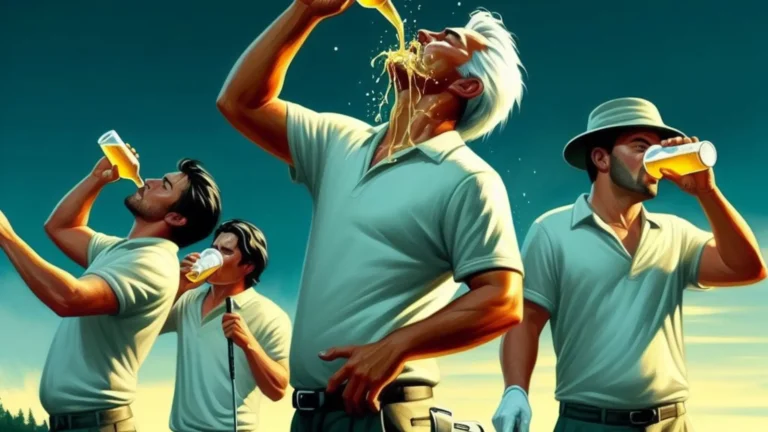Five Tips for Hitting Pure Iron Shots
Making solid contact with your iron shots is one of the most satisfying feelings in golf. When you strike an iron shot purely, the feedback travels up the club shaft and into your hands like a lightning bolt. There’s no mistaking a purely struck shot. The ball launches high with ample spin, lands softly, and sticks close to its landing spot. Golfers relish these types of iron shots.
Unfortunately, most amateur golfers struggle with consistent iron play. Mishits are more common than centre-face contact, leading to frustration and lackluster scoring.
However, learning proper iron play fundamentals can lead to dramatic improvements. By implementing the following five keys for hitting iron shots purely, you’ll gain confidence and lower scores.
Proper Set Up Alignment Ensures an Efficient Swing
The first key for striking iron shots purely begins with your set up alignment. Setting up correctly establishes an efficient foundation for your swing. It allows your body to rotate freely during the backswing and downswing to return the clubface to impact effectively.
When addressing an iron shot, first align your clubface directly at your target. Next, position your feet, knees, hips and shoulders parallel left of your target line. Gripping the club lightly in your fingers, stand erect over the ball, distributing your weight evenly between your feet. Bend slightly at the hips to establish posture, keeping your back straight. Position the ball off your left instep for iron shots.
This set up alignment promotes an efficient takeaway, allowing your body to coil properly on the backswing. From this balanced posture, your swing sequence unfolds naturally, enabling free rotation of your core through impact for pure iron shots.
Keep Your Arms Connected for Solid Iron Shots
Maintaining connection of your arms during your swing promotes solid ball striking with irons. When your arms remain connected to your chest, it stabilizes the motion of your swing. This allows your body to control the movements of your arms and club effectively.
During your backswing with an iron, let your arms stay passive while your shoulder turn lifts the club. As your torso rotates away from the ball, keep your elbow pointing down and arms connected to your chest. At the top of the backswing, hinge your wrists fully while keeping arms and elbows close together.
Starting down, initiate the swing by rotating your core while keeping your arms connected. Maintain the angles formed during your wrist hinge as you accelerate through impact. Keep arms connected until releasing fully just past impact. This sequence promotes correct hand path and dynamic balance for repeating a solid iron impact at the ball.
Coil Your Torso Fully for Complete Iron Swing Sequence
Actively coiling your upper body fully on the backswing sets up proper sequencing of motions for striking irons purely. Winding torso, arms and club together builds potential power in your swing. This allows efficient uncoiling through impact to release maximum speed for correct club delivery.
As you begin your iron backswing, initiate the motion by turning your chest laterally away from the ball. Feel your back arming against your left arm as it folds. Continue turning your shoulders perpendicular to your spine angle as you complete your wrist hinge. Loading your right side fully sets your body in sequence for unloading downswing power.
Uncoil your sequence in reverse order starting down. Rotate core first to pull arms and club down together back into impact. Time the sequence so your straightening left arm and releasing right side snap through the ball in sync. Fully sequencing your torso coils this way ensures solid iron striking.
Shallow Out Your Iron Downswing for Consistent Solid Contact
To strike irons crisply at impact, it’s essential to shallow out your swing approaching the ball. This means the clubhead slides downward at a flatter angle just before impact. Shallowing creates solid glancing blow that compresses the ball for pure iron shots.
From the top of your backswing, start down by clearing your hips out of the way. Feel your trail elbow drive down and left to initiate shallowing motion. As you rotate through impact, your hands should pass your right leg before releasing forward. Low point moves gradually forward from intersection with the ground.
Maintaining this shallow attack angle is key for all iron play. It keeps the clubhead moving left of target through impact, promoting compressing against the ball. This strike imparts proper launch and spin on all iron shots from wedges through long irons. Master shallow attack for success with your iron game.
Control Ball Position for Consistent Iron Impact
An often overlooked key for hitting solid iron shots is proper ball position at address. Placing the ball incorrectly in your stance negatively affects your ability to catch it purely at impact. each iron shot requires controlled positioning for central contact.
As a guideline, play the ball off your left heel for short iron shots, progressing slightly more forward in mid irons. Place long irons and hybrids closer to central stance for completeness. You can fine tune exact ball position with practice and observing wear marks on your clubface after shots.
Controlling ball position complements your shallow attack angle. It locates impact at the club’s lowest point through its arc, maximizing solid contact. Pure iron shots result from dialing in precise ball positions for central sweetspot blowup on the face.
Conclusion
Mastering these five keys – proper alignment, connected arms, full torso coil, shallow attack and controlled ball position – provides the blueprint for hitting crisp iron shots consistently. Integrating them together into your practice and swing thoughts breeds confidence under pressure. You’ll flush more pure iron shots that land softly and stop near their pitch marks. That feeling keeps us chasing the satisfaction of crisply struck golf shots.







